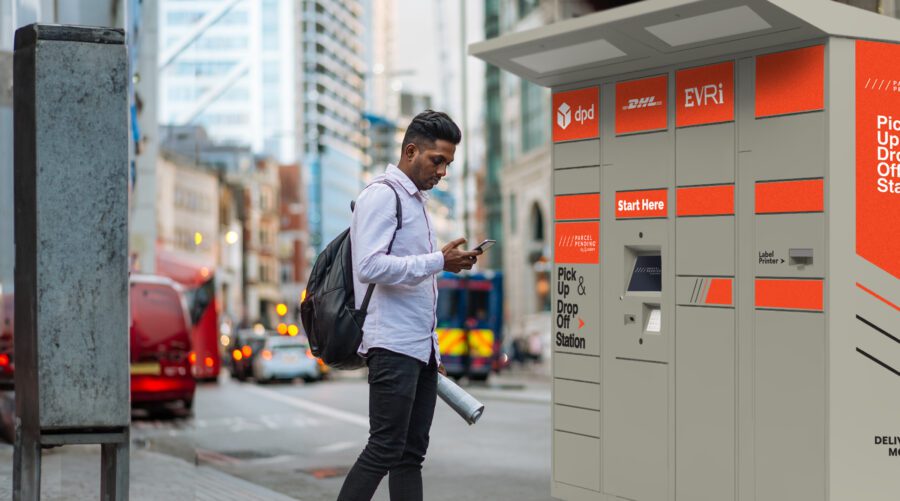
University
7 Ways to Transform Your University into a Smart Campus
Written by: Parcel Pending
5 Min Read
Published: November 14, 2021
Updated: April 17, 2024
Updated April 13, 2024
The Internet of Things (IoT) is pervasive; it changes how we purchase products, how we consume media, and even how we store data. As colleges consider their own digital conversions, here are seven ways to implement smart campus features and transform your university into a smart campus.
Let’s start, however, with an overview of smart campuses and the reasons why it’s time to embrace smart campus technology.
Smart Campus Defined & Its Benefits
A smart campus initiative is when a college or university leverages innovative smart technology and/or smart campus solutions to create better educational experiences and outcomes for its students, staff, and faculty. In fact, the number of IoT–connected smart devices is expected to skyrocket to over 75 billion by 20251. As higher education institutions make plans for 2024and beyond, they should consider implementing a smart campus initiative and harness any applicable data to:
- Improve the student experience
- Increase student engagement and student retention
- Boost operational efficiency
- Automate campus operations, workflows, and processes
- Conserve energy and resources
- Reduce human error by automating populating data automatically
- Derive insights using data analytics
- Foster better interaction within the university environment
- Leverage interactive learning models
- Create a standard of continual technological improvement
When you read the words “smart technology,” you might automatically think about innovations like artificial intelligence. While you can implement a smart campus solution like this, what really matters is integrating smart technology that boosts the learning and teaching quality of your educational institution.
After all, today’s students live in a digital ecosystem. They expect their university or college to create a frictionless, intuitive, and contactless experience. More importantly, both student and faculty cohorts are looking for employment and learning opportunities that align with their mission in the world; purpose plus passion must come together to create a higher education institution of choice.
7 Ways to Transform Your University into A Smart Campus
#1 Integrate Smart Lighting & Utility Systems
When lighting, air conditioning, and heating systems are connected to sensors, you can receive data-driven information and make real-time decisions that help with energy management. You can turn lighting on or off depending upon the data, helping you make smarter decisions for classrooms, parking lots, and other aspects of campus operations.
Arizona State University, for example, has recently undertaken a $300 million football stadium renovation that includes smart sensors that alert management about lighting and utility consumption2. The system even includes information about concession sales! As another example, The University of Texas at Austin runs the largest microgrid in America. The microgrid manages and provides all the electricity, heat, and cooling on-site – creating a perfect example of a smart campus.
#2 Marry Learning with Smart Technology
Southern New Hampshire University earns high marks for teaching architecture through the lens of a 3D holographic model. And Rensselaer Polytechnic Institute has created a revolutionary and immersive way to teach Mandarin. Students learn this Chinese dialect within a virtual computer-generated street scene and by conversing with avatars. As one successful student explains3: “I thought it would be cheesy. It’s definitely more engaging because you’re actively involved with what’s going on.”
#3 Create a Secure VPN Infrastructure
Today’s campus life experience is a blend of on-campus and off-campus learning. Now is the time to scale up your VPN infrastructure to create a secure smart campus without fear of data intrusion.
#4 Install Fast, Free, & Reliable Wi-Fi Throughout Campus
Connectivity is now a part of campus life. Students and faculty expect to move from building to outdoors without losing a signal on their computers or mobile devices.
#5 Adopt Flexible Learning Spaces
The COVID variants have taught us the value of flexible, open-air spaces. Quads, for instance, can easily be transformed into learning spaces with tents and seating areas that foster a smart campus environment.
#6 Tie Together Smart Technology with Careers
Since a 2019 Newsweek poll found that students would rather go to a community college with a guaranteed $100,000 job than go to Harvard tuition-free, it’s imperative to offer a practical curriculum that directly leads to employment opportunities4.
#7 Install Smart Lockers that Work as Campus Hubs
It’s time to change the way you think about smart lockers. Although originally deployed as a safe and secure package delivery system, today, higher education institutions are transforming them into a central distribution system for transferring keys, parking passes, laptops, books, move-in materials, and more.
Since so many departments can leverage smart lockers (e.g., administration, bursar, dorm rooms, and bookstores), it’s important to consider pooling various departmental resources for the investment. Further, parcel lockers boost operational efficiency while decreasing staffing costs. In fact, switching to an intelligent university parcel system can boost staff productivity by as much as 30%!
Here are a few ways that universities are leveraging smart lockers for more than just mail and packages:
- Bookstore Merchandise: Clothing, books, electronics, gifts, and more can be retrieved with zero face-to-face interaction. Do you run a campus bookstore? Check out our related blog post to learn more about using smart lockers to improve bookstore operations.
- Electronics: Student laptops, tablets, and other school-owned devices can be disseminated.
- Class Equipment: Classrooms can distribute equipment for course work and projects, and students can easily and safely return the items.
- On-Campus Dining: A student can simply place an order for a meal online via the university’s dining software and then pick up their food and beverage items safely without coming in contact with anyone.
- Student Mail: Packages and regular USPS mail.
- Move-in/Move-out Materials: Items such as keys, ID cards, welcome packets, and other important school materials can be shared with students via smart lockers.
- Event Tickets: Tickets for sporting events and other student activities can be distributed via smart lockers to minimize lines and contact with ticket agents.
To remain relevant, higher education institutions must leverage technology to create smart campuses that create positive outcomes. It’s time to move away from siloed technology and move towards connected systems that synergistically create better experiences for your students, staff, and faculty.
Ready to implement electronic lockers as part of your smart campus transformation? Contact a Parcel Pending by Quadient representative today.
Sources:
- Statista. Internet of Things (IoT) connected devices installed base worldwide from 2015 to 2025 (in billions). (2016, November 27). https://www.statista.com/statistics/471264/iot-number-of-connected-devices-worldwide/.
- Manning, Katherine. Process Maker. 8 Smart Campus Technology Examples. (2020, July 16). https://www.processmaker.com/blog/8-examples-of-smart-campus-technology/.
- Marcus, Jon. The New York Times. How Technology is Changing the Future of Higher Education. (2020, February 20). https://www.nytimes.com/2020/02/20/education/learning/education-technology.html.
- Fink, Jenni. Newsweek. Most College Students Would Choose Community College with a Guaranteed $100K Job Over Free Harvard Education. (2019, August 12). https://www.newsweek.com/college-poll-harvard-community-college-guaranteed-job-1453902.



